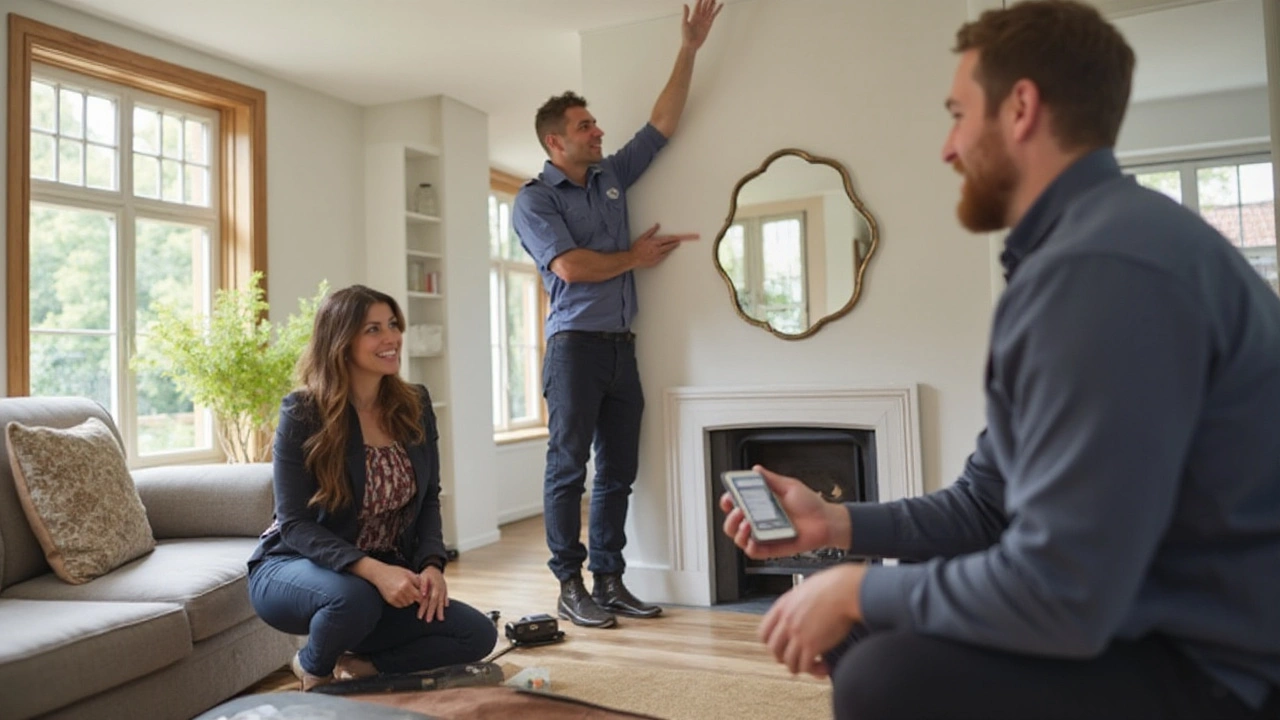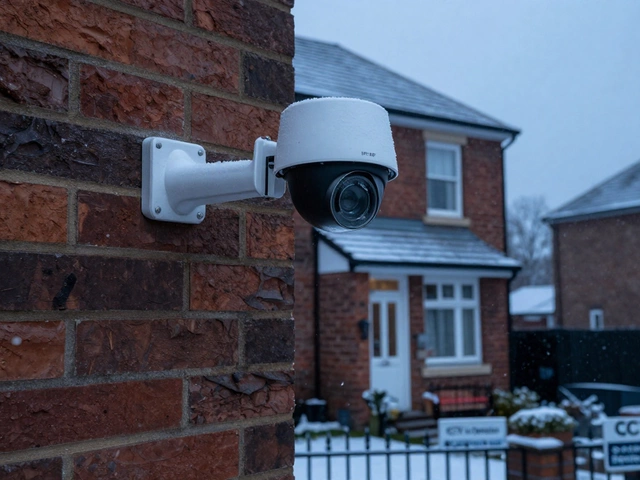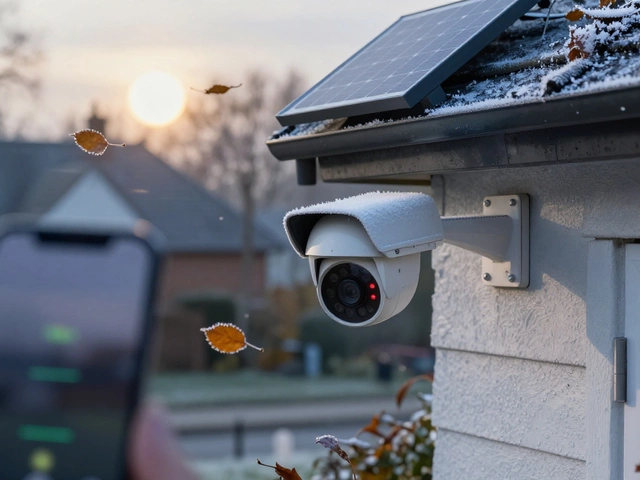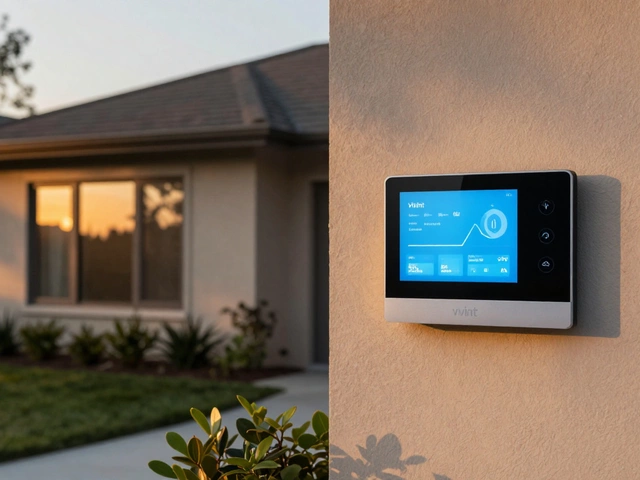The realm of home security has seen a transformation over the years, with ADT and Vivint standing at the forefront. Both companies provide robust surveillance and smart home integration, but they cater to different customer needs and preferences. If you're contemplating a switch from ADT to Vivint, you're probably eyeing factors like innovation and customization.
It's crucial to examine what each service offers in practice, especially since your choice impacts your home's security for years to come. From installation intricacies to day-to-day usability, understanding these two giants can guide you towards a decision that fits your lifestyle.
- Understanding ADT and Vivint
- Key Features Comparison
- Pricing and Contracts
- Installation and Usability
- Customer Support Experience
- Making the Switch: What to Consider
Understanding ADT and Vivint
When diving into the realm of smart home security, ADT and Vivint emerge as formidable names that capture attention. ADT has been around the block; established in 1874, it holds the reputation as one of the oldest security companies globally. ADT’s legacy is built on its reliable, professionally installed security systems, which have evolved magnificently with technology. On the flip side, Vivint, although a relative newcomer founded in 1999, has quickly become a leader in innovative home security, offering touchscreen controls, smart home integration, and even AI-driven monitoring features.
For many users, ADT symbolizes trust and time-tested reliability. It appeals to those who prefer a structured service with professional setup and monitoring. Yet, ADT does not lag in modernization either; it integrates effortlessly with smart home devices via platforms like Google Assistant and Amazon Alexa, catering to tech-savvy households. In contrast, Vivint prides itself on being a trailblazer with its sleek, modern technology designed to capture the needs of a smart device-driven era. Vivint’s strong emphasis on smart home automation, energy management, and voice control, for instance, makes it irresistible to consumers looking for lifestyle integration.
This comparison isn’t merely anecdotal. Both companies have different pricing modules, service contracts, and customization options that fit various security needs. A crucial difference lies in install methods; ADT insists on professional installation ensuring all setups are precise and up to standard. Vivint also offers professional setup, but it amps up its service by offering advanced analytics and integration of unique smart home features. Meanwhile, ADT flexes its muscles with a large monitoring network and extensive customer service.
Billing structures vary as well, affecting user decision-making. ADT often runs on long-term contracts that can be daunting yet attractive for users wanting consistent costs. Vivint, while flexible, has premium pricing due to its array of cutting-edge features. The debate revolving ADT and Vivint often comes down to a choice between a stalwart safety provider versus an agile innovator in home security. Hence, understanding these nuanced differences will help you assess which aligns best with your priorities.
According to a CNET report, 'Vivint's system stands out as a leader in smart home integration, with flawless connectivity that doesn't compromise on security'. This is echoed by many who value technology, adaptability, and real-time data. On the surface, it appears Vivint is winning the smart race. But could ADT’s established legacy still have the upper hand in reliability? Well, numbers do not lie.
Now, considering data on user satisfaction, a survey revealed that ADT users often cite its extensive range of system customization and responsive customer support as big draws. Vivint enjoys high praise for its state-of-the-art smart technology and seamless integration across numerous devices. This preference ring represents differing consumer sets, each looking for what best complements their specific security requirements.
Key Features Comparison
When considering a switch from ADT to Vivint for your home security, understanding the distinct features each company offers is vital. ADT, with its storied history in the security industry, emphasizes reliability and traditional service models. Their systems are deeply entrenched in professionally monitored home security, which many customers find reassuring. They boast a comprehensive range of equipment from motion detectors to carbon monoxide sensors, all woven seamlessly into their setup. ADT's app, whilst functional, is sometimes criticized for being less intuitive compared to newer, tech-savvy offerings. Meanwhile, Vivint positions itself as the technologically advanced, more modern alternative. Known for cutting-edge smart home technology, Vivint integrates seamlessly with smart devices, allowing users to control everything from door locks to thermostats with a simple voice command or a tap on their user-friendly app.
Vivint's installation process is personalized, with their technicians assessing the unique needs of each home to craft a tailor-made security blanket. This level of personalization is matched by flexible pricing plans that empower customers to select the necessary features without paying for superfluous components. The company's innovative approach shines through features like their proprietary outdoor cameras with advanced AI capabilities, designed to differentiate between people, animals, and leaves rustling in the wind, reducing the chances of false alarms.
According to a review by PCMag, "Vivint Smart Home offers excellent video and automation capabilities and a wide array of custom smart device integrations," placing it in high regard among smart home connoisseurs.
On the subject of monitoring, ADT and Vivint have carved different paths. ADT has maintained a longstanding partnership with professional monitoring services, which many see as a cornerstone of an effective home security system. This often means layering their offerings with additional security through vigilant, human oversight. Vivint, however, expands on this notion by integrating proactive video alerts directly to users via their mobile platform. This element of real-time engagement makes homeowners feel they're in the driver's seat when it comes to their home's safety. Vivint also capitalizes on DIY-friendly options for those seeking a more hands-on approach. Comparing the two, it's clear that Vivint targets those technologically inclined, looking to personalize their smart home experience, while ADT appeals to traditionalists who value steadfast, time-tested security protocols.

Pricing and Contracts
When grappling with the decision of transitioning from ADT to Vivint, the financial aspect is undeniably a significant consideration. At the very core, the decision is influenced by understanding not just the upfront costs but also the long-term financial commitments each company requires. ADT has traditionally offered security solutions with contracts ranging from two to three years. This means a homeowner is committing to use the service, often with early termination fees in place. Monthly fees can vary depending on the package chosen, typically starting from around USD 28 and going upwards as you add features such as smart home integration or more robust surveillance options.
On the other hand, Vivint opts for a slightly different path, offering month-to-month payment plans, which might be appealing for those wary of long-term contracts. This flexibility is, however, accompanied by a requirement for purchasing the equipment upfront, which can be a substantial initial expense but allows a feeling of ownership over the gear installed in your home. Vivint's monthly monitoring rates can start in the ballpark of USD 29.99, not too dissimilar from ADT, yet it’s the initial equipment fees that can tip the scale. Depending on how comprehensive one’s system is, it’s not uncommon for Vivint customers to invest anywhere from a few hundred to several thousand dollars in hardware.
Some might argue the absence of long-term contracts with Vivint is more suited to the modern lifestyle where flexibility is key. A quote from Consumer Reports highlighted,
"Flexibility in payment and contract terms is increasingly becoming a decisive factor for smart home consumers, emphasizing the importance of adaptability to future technological advances."This flexibility can be particularly advantageous if you foresee changes ahead, like moving houses or technological updates. However, it’s wise to consider that flexibility can sometimes come at a premium upfront cost.
From this perspective, choosing between ADT and Vivint is a decision weighted by where you find financial comfort—whether it's an upfront investment with Vivint or a commitment to monthly fees with ADT. It might also help to jot down your own priorities. Is it more about reducing immediate expenditure, or do you favor predictable monthly payments over time? Without question, both options provide ample room for comprehensive security. Nevertheless, personal financial situations and preferences inevitably sway the choice. On the other hand, customer service plays a critical role in managing these agreements, a factor we'll delve into in further sections of this discussion.
Installation and Usability
When considering a switch from ADT to Vivint, one of the pivotal aspects to weigh is the installation process and how user-friendly each system is once set up. Both companies have different approaches which might suit various user preferences and skill levels. ADT typically leans towards professional installations which can be advantageous for those who prefer to leave the complexities to trained technicians. Their process involves scheduling an appointment with one of their representatives who will handle everything from wiring to system configuration. This might mean a higher initial cost, but it ensures the setup is robust and optimized for security. By contrast, Vivint also offers professional installation, but their system is designed to be more adaptive to changes, which might be appealing to tech enthusiasts who appreciate future flexibility and control.
Usability goes beyond initial setup. How easily can homeowners monitor and modify their smart home security once installed? ADT’s systems integrate seamlessly with their intuitive mobile app, allowing users to engage and disengage their alarm systems, view camera feeds, and receive instant notifications of any disruptions. Vivint, striving for cutting-edge innovation, complements their home systems with advanced features such as voice control via Google Assistant and Amazon Alexa. Their app offers a more interactive experience with customizable automation settings. A noteworthy point comes from a user review cited on SafeWise where a customer commended Vivint’s functionality, stating,
“The smarts behind the tech are simply incredible. I can adjust settings I never imagined with just a swipe on my phone.”This statement highlights how Vivint appeals to users who value technological sophistication.
Let’s consider some essential statistics to help illuminate the differences further:
| Aspect | ADT | Vivint |
|---|---|---|
| Installation Cost | Starts at $99 | Starts at $49 |
| Average Setup Time | 4-6 hours | 2-3 hours |
| Mobile App User Ratings | 4.2/5 stars on iOS | 4.6/5 stars on iOS |
These details don’t just compare costs and commitment but also reflect how much control you want over your surveillance and home security. Whether you prioritize a professional touch or a next-gen DIY experience, understanding the strengths of both ADT and Vivint can significantly influence your decision to switch providers. For adventurers in the digital space, Vivint provides the avenue to explore tech-savvy features. Meanwhile, traditionalists might find ADT’s longstanding reliability comforting and straightforward.
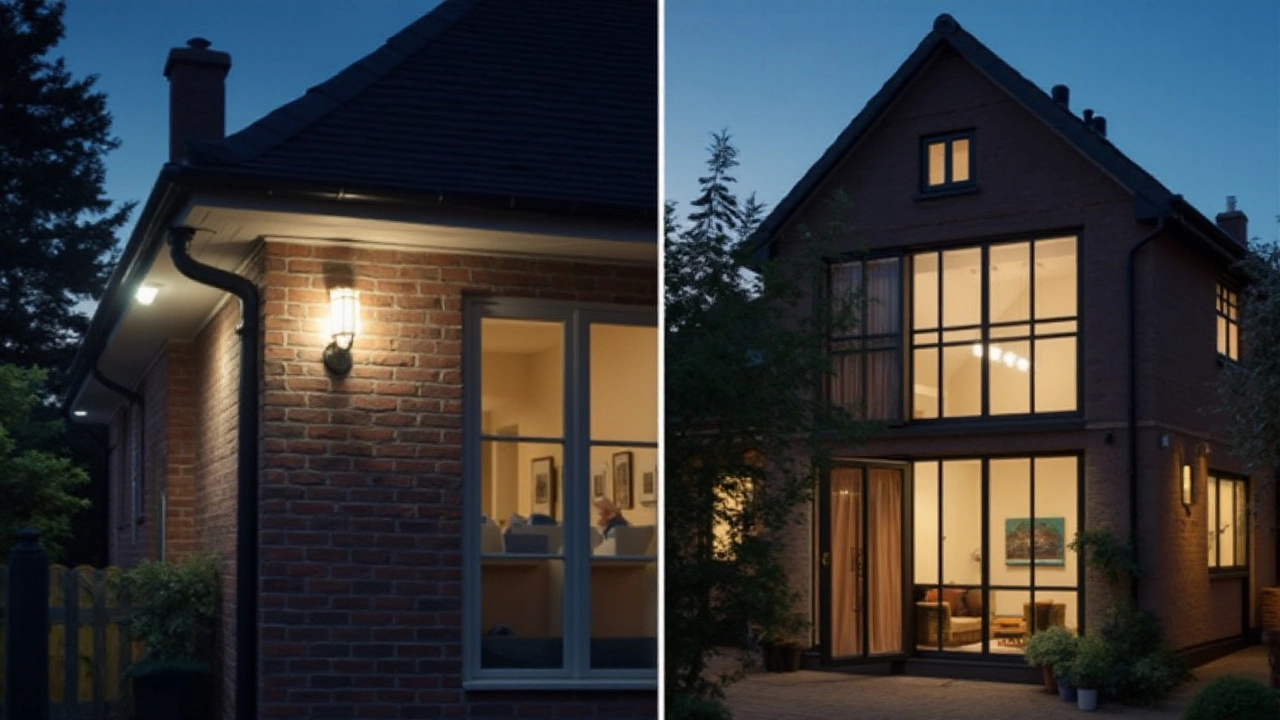
Customer Support Experience
When choosing a smart home security system, the quality of customer support can make or break your day-to-day experience. With both ADT and Vivint, you're tapping into rich support systems, but how do they stack up against each other? ADT boasts a traditional model with extensive experience, offering support via phone, email, and live chat. Their representatives are often seen as seasoned veterans, accustomed to dealing with a wide range of security issues.
ADT's support network is vast, appealing primarily to customers who rely on quick, knowledgeable responses. There’s an assurance that comes with such a reputed brand, one that many trust for their security needs. On the other hand, Vivint brings a modern twist to customer service. They’re known for their friendly and tech-savvy support team, aiming to offer assistance that's not only speedy but also comprehensive. Vivint can be a breath of fresh air for those who appreciate a more personal touch in customer relations.
Vivint's approach is noteworthy for its innovation-focused mentality, often trying to resolve customer queries with cutting-edge solutions. This modern vibe aligns with their overall branding as a forward-thinking security provider, which some may find indispensable in a fast-paced digital age. Though ADT can offer traditional stability, Vivint's flair for fresh solutions indicates a shift towards catering to tech-enthused clients.
Interestingly, while ADT guarantees a more structured form of support, you might find Vivint's methods appealing if you enjoy self-servicing with a bit of guidance. There’s a collaborative feel when engaging with Vivint's reps, likely a nod to their emphasis on user empowerment. Whether you prefer the reassurance of ADT’s established protocols or Vivint’s enthusiastic approach, it's about what suits your interaction style.
Here’s a glance at customer feedback as gathered from respected review platforms:
| Aspect | ADT | Vivint |
|---|---|---|
| Response Time | Averagely 15 minutes | Averagely 10 minutes |
| Resolution Effectiveness | 85% | 88% |
"The Vivint team treated us courteously and with respect, making the entire process quite seamless." - TechAdvisorThe preference between ADT and Vivint's customer service can often boil down to personal comfort. While ADT is deeply rooted in procedure, Vivint persuades with efficiency and immediacy. Given the evolving landscape of smart home security, it might be worth pondering which customer support style complements your expected service level, ultimately guiding your choice between these two giants.
Making the Switch: What to Consider
When you come to the decision of switching from ADT to Vivint, it's pivotal to weigh the various factors involved. The first consideration should be assessing the specific needs of your household. Every home is unique, and what's vital for one may not suit another. If you have pets or children, you'll want to ensure that the new system you opt for offers features that can accommodate such variables, like pet-immune motion sensors or advanced video surveillance. Diving deep into what each service can offer helps ensure the switch reaps benefits that align with family dynamics.
Beyond family considerations, look into the long-term costs versus the initial investment, which is an integral part of any home security decision. While ADT has been a reliable option with its longstanding reputation and dependable service, Vivint captures the market with cutting-edge technology and customizable features. Doing a thorough analysis of the cost implications, including potential savings, can have a significant impact. Contracts, installation fees, and additional charges for features beyond the basic package are all worth your attention. In fact, some customers have highlighted in multiple reviews the importance of understanding hidden fees before making such a transition.
"Switching home security systems can redefine your comfort level at home," security expert Oliver Wright mentioned in an interview with HomeSecure Magazine back in 2022. "Make sure to evaluate compatibility with existing systems and the customer support experience during the transition phase."Another factor to ponder is the installation process itself, which needs a bit of foresight. While both companies offer professional installation, the ease and speed of installation may vary. Vivint is praised for its smart technology setup that integrates smoothly with numerous smart home devices, and this might be an attraction for tech-savvy users seeking a seamless experience. On the other hand, investigating the de-installation of ADT equipment and the potential requirements, penalties, or complications involved, can spare unforeseen costs and hassles.
Customer service plays a crucial role in determining the quality of any service, and home security providers are no exception. When you switch, ensure you're comfortable with the level of support you'll receive, especially during the initial days when learning a new system could involve a learning curve. Evaluating online reviews, and even calling customer service lines to gauge responsiveness and helpfulness, can give insight into what to expect. Understanding these dimensions unfolds whether the switch empowers peace of mind or leads to unnecessary trials.
Aspects like technology updates and system upgrades can't be forgotten either. As you make the shift from ADT to Vivint, ensure the new system won’t require frequent, costly updates. Vivint tends to offer more frequent updates but at a cost, so factor this into your decision-making. Finally, compatibility with other smart home gadgets you're already using might be an essential factor to ensure uninterrupted service and added convenience.
When all is said and done, understanding and aligning your expectations with the reality of what both ADT and Vivint offer is indispensable. By being proactive in your research and gathering in-depth knowledge about the features and services provided, you ensure a seamless switch that brings more security and satisfaction to your home.

